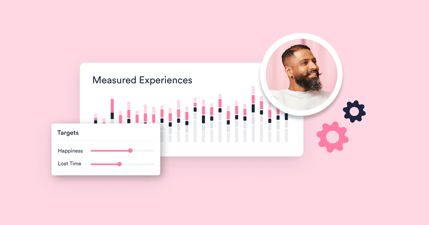Companies thrive or die based on the quality of their decision-making, and poor decision-making can, in extreme cases, bring about the demise of an organization. Corporate decisions can relate to strategic intent, technology investments, tactical resource utilization, or a wealth of other possibilities – where making the right decision at the right time is critical. This applies to the corporate IT organization as much as the company as a whole.
IT decision-making and experience data
Few, if any, IT organizations have unlimited resources, meaning that how the available resources are applied or spent is important. In the case of continual improvement, it can be challenging for IT leadership to understand how best to prioritize the available opportunities. Plus, there are likely improvement opportunities that remain hidden thanks to the limitations of traditional IT performance metrics.
However, experience data helps. It allows IT organizations to find the most meaningful problems to solve. Even if technical data shows something is wrong with IT service delivery or support, people data confirms whether the identified issue is meaningful to solve. Because only people data can tell an IT service provider what matters to employee productivity and business operations, people or experience data is needed to allocate IT resources effectively.
Recognizing the IT experience and decision-making layers
Experience data provides insights and informs decision-making for various IT and business roles. For example, CIOs, IT leadership, and business stakeholders take an “Overall IT” perspective. They need to understand the big picture of IT’s reputation, end-user experience, and the main issues. The experience data and insights help with the following:
- Prioritizing development areas based on company strategy
- Partner, product, and vendor changes
- Budget allocation decisions based on people data.
Managers and service owners are concerned with their relevant IT areas. They must understand how their services or areas affect end-user experiences and identify issues. They also need to quantify productivity. The experience data and insights help with the following:
- Proposals for development projects
- Prioritization of the development backlog
- Tool selection.
IT teams and IT workers are concerned with more detailed insights. There is a need to engage end-users with specific questions when creating improvements. The experience data and insights help with the following:
- Personal way of working on a daily basis
- Training for IT teams about business needs
- Changes to communication.
Real-world decision-making examples – CIOs and IT leaders
Our customers show us that experience-focused CIOs and IT leaders allocate IT budgets based on the business’s most important priorities. Experience data provides a new shared focus for the IT team and partners, with yearly focus areas set based on the current experience and IT’s strategic development areas. Organizations transition from IT services being developed in silos to having a shared view of experience with all IT management members.
Real-world decision-making examples – IT directors and managers
IT directors and managers lead their teams with motivating experience targets. IT employees know where to focus their efforts to show business value. For example, Danone had multiple collaboration applications. It measured the associated experiences and made a consolidation decision based on the experience data with each tool.
Real-world decision-making examples – service desk owners
Service desk owners also lead their IT teams with motivating experience targets. IT support employees know where to focus to show business value. For example, YIT renewed its IT service portal with the target of closing the email channel. The email channel was only closed after the portal channel received better employee feedback than email. Multiple customers have handled their MSP migration process with HappySignals experience data. After the change, experience always drops, but experience data helps to correct the situation quickly.
Real-world decision-making examples – service desk managers
Service desk managers can apply focus to real end-user issues. For example, Reckitt recognized that Finance employees were less happy with IT support at the end of the month. Based on this finding, it introduced a higher priority for finance tickets at the end of the month. Organizations can employ experience data to train agents to better serve employees. The training can include soft skills, business understanding, or tool/ process training. IT service desk tickets can be prioritized based on experience and lost time, not only by the employee’s role. The employee of the month can be selected based on how many positive mentions agents get (about their attitude) rather than more operational measures.
Real-world decision-making examples – service desk agents
With experience data, service desk agents understand how valuable their work is, which increases their happiness and motivation. They appreciate that their role is not to close tickets but to help people. Region Midtjylland trains service desk agents to recognize support profile personas based on how end-users speak on the phone. This ability to personalize IT support allows the end-users to feel like they are really heard.
Selecting the right focus areas for experience-driven decision-making and improvements
Our work with customers has identified that the focus areas should be set every six months using the current lost time and happiness data and company and IT strategies. Focus can be set per measurement area, such as collaboration with IT, remote work, services, service portal, office environment, laptops and computers, enterprise applications, or mobile devices. Alternatively, the focus can be set at an operational data level using experience perspectives such as business units, support profile personas, employment length, or country.
When using experience data to inform better IT decision-making, it’s ultimately about what will deliver the most significant improvements for your organization.
Learn more about experience-driven IT decision-making here.




